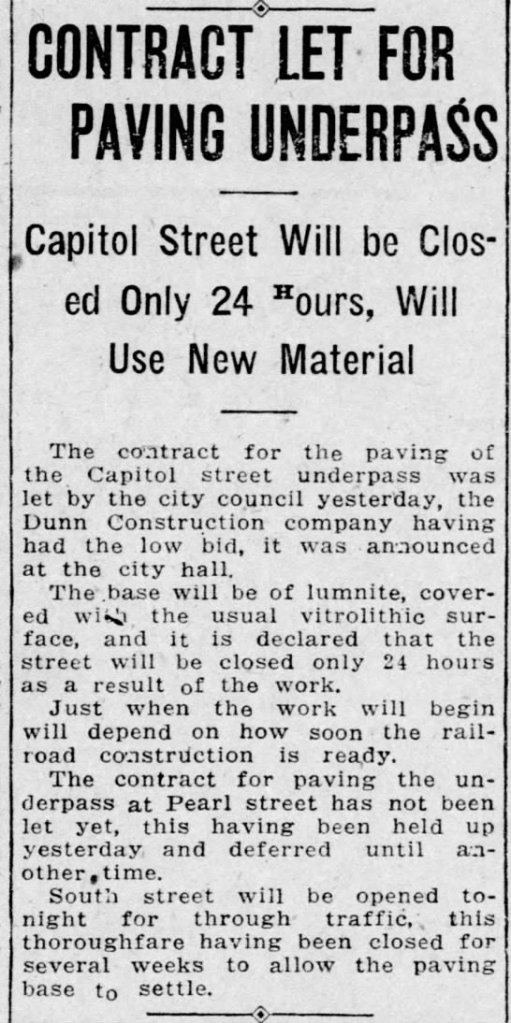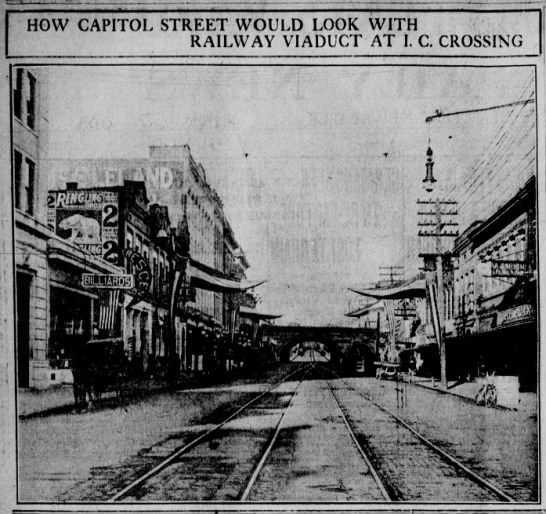Although the railroad bed was not raised over Capitol Street and other east-west downtown streets until 1926, when the new Union Station was under construction, this little “what if” rendering in 1917 shows that city officials and probably many residents saw a need long before then to allow unencumbered passage of trains and car traffic.
Since we’re on the subject, this 1926 article proves that things just happened a lot faster back in the day–only 24 hours closure of Capitol Street for the construction of the overpass. Or underpass, depending on your perspective.

Clarion-Ledger, June 2, 1926.
Here’s how the same view on Capitol Street looks today. As I recall, the bricks were added to the viaduct in 1999, when Union Station was renovated and reopened as a multi-modal station for trains and busses.


Great Friday read!
LikeLike
But did you know that there was, very long ago, a mini-golf and other amusements establishment inside the overpass? The space was later used for a Hertz car rental service. I wonder if the space has been filled in …
LikeLike
Not to quibble over semantics, but the 24 hours referenced in the Daily News article refers to the paving of Capitol Street beneath the overpass, or viaduct as it was known in Jackson. Actually, that can be easily be done today in less time than that. The building of the railroad overpass took months, if not years in its present iteration. In the 1977 tome “Jackson/A Special Kind of Place” by Carroll Brinson, on page 227 there is a photo of the I.C.R.R. tracks at grade level at Capitol Street in the early 20’s. On page 238, there is a photo taken in 1925 showing the very first train passing over the newly elevated tracks replete with Mayor Walter Scott, Commissioners A.F. Hawkins, and R.M. Taylor. In this photo, the overpass resembles a trestle, rather than the concrete, and now brick, overpass that we have come to recognize as the viaduct. The reason for the length of time in the viaduct’s construction was that the raising of the tracks had to begin way to the north along Mill Street and continue way to the south along S. Gallatin Street and later S. Roach Street. This required underpasses for all the streets that formerly crossed the tracks, and eventually led to the Fortification Street overpass, and the beautiful Woodrow Wilson overpass. This fill and concrete work, which would have taken months, eventually replaced the trestle.
LikeLike